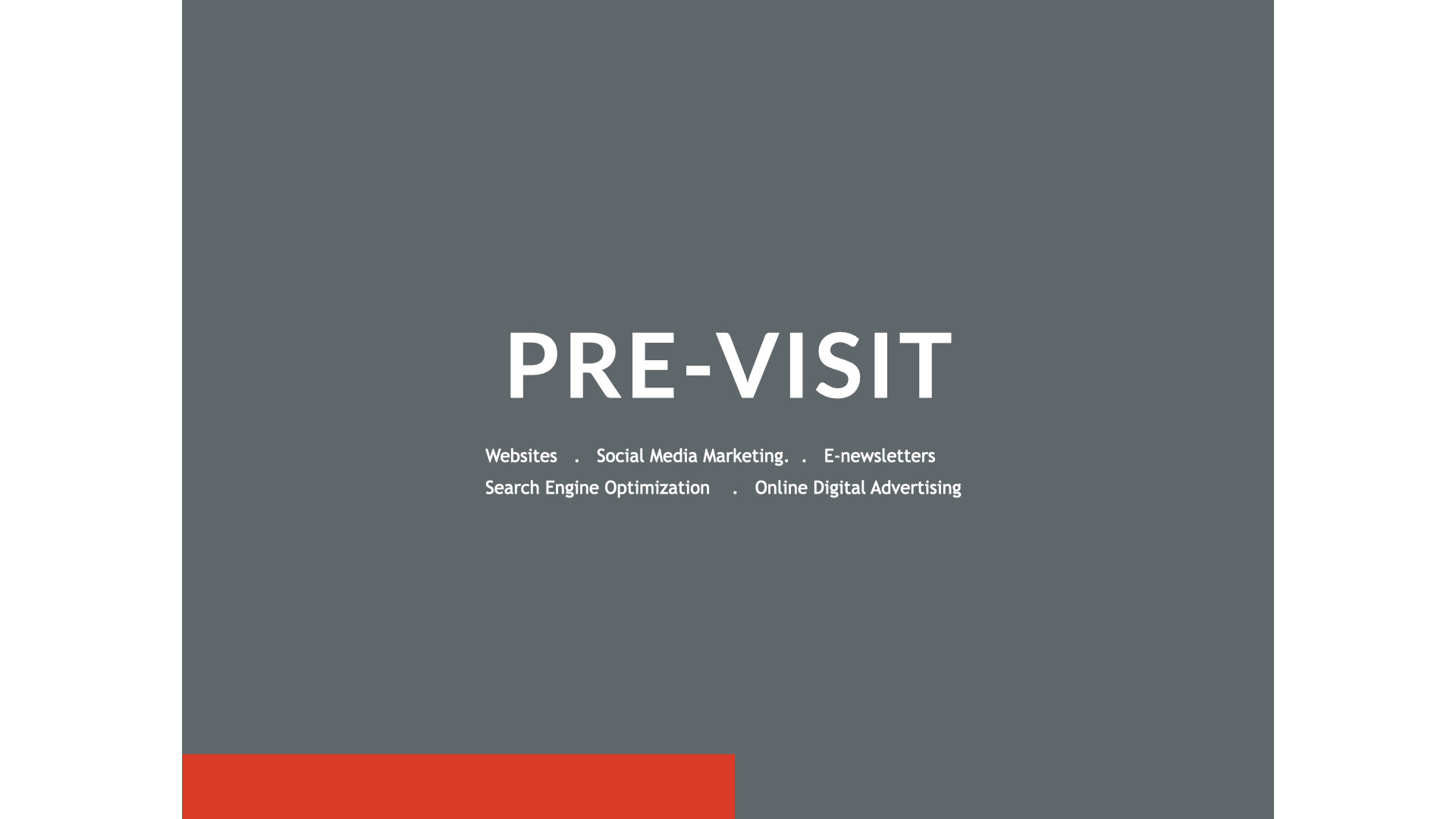A Brand Assessment is a comprehensive evaluation of the four key elements that shape a community’s visual identity: logo design, wayfinding, environmental design, and digital communications.
We approach this assessment from the perspective of a first-time visitor—capturing the initial impressions that influence how your community is perceived.
This process helps uncover your community’s competitive advantages, boosts identity awareness, and lays a strong foundation to ensure you remain relevant and stand out in a crowded landscape.
THE PROCESS:
Pre-Visit Review
We begin by examining the community’s digital footprint. This includes evaluating municipal websites, social media channels, partner organizations’ online presence, messaging, and more. We also identify opportunities for cross-promotion to strengthen the community’s online visibility.
Site Visit
Next, we conduct an on-the-ground wayfinding experience, starting from key vehicular entry points. We thoroughly assess environmental design elements such as streetscaping, signage, navigation ease, public gathering spaces, and parks to understand the physical experience of visitors and residents alike.
Community Interviews
We engage with a diverse group of stakeholders, including community leaders, business owners, residents, and people living outside the community. These interviews deepen our understanding of the community’s strengths, challenges, and industry needs. We also review current economic development plans and future aspirations to ensure alignment with branding strategies.
Analysis, Suggestions & Ideas
Based on our research, we provide an objective analysis that clearly defines the community’s unique brand and sense of place. We deliver tailored recommendations that consider budget and timelines, helping guide strategic decisions to enhance the community’s identity.
For the entire presentation please fill out the form below.
Visual Identity
A brand's visual identity can be defined by what the consumer pictures in there they think of that company. It can include the logo but also so much more. Visual identity includes all the aspects associated with a brand.For example, colors used, interior design elements, the atmosphere of a store, printed pieces, website, packaging...
Brands that are able to leverage there visual identity are able to stand out amongst their competition. They stay at the forefront of a consumer's mental image because their brand is deliberate about the appearance of everything that their name touches.
Your visual identity is an element of your brand which you have complete control over. Visual Identity is an important piece of the branding puzzle.
Signage
When it comes to signage, it can greatly impact your brand’s physical product and place. Whether you are a municipality, destination, or college campus, signage is very important because it is the face of your business. Keep in mind that this can either improve or tarnish your relationship with your brand. Staying consistent with signage is particularly important for a community because it is the visual indicator of your brand.
Signage is an excellent cost-effective way to extend your brand. In some cases, it can be one of the first elements of a brand that visitors interact with. Most sign companies focus on more rational goals of signage such as color schemes, lighting efficiency, roadway presence, etc. While these aspects of signage are important, many companies are missing the opportunity to set themselves apart.
Enviorment
Environmental branding encompasses many design disciplines such as interior design, graphic design, landscape, and industrial design. It creates a perception of an organization through an intentional combination of these disciplines within a three-dimensional space. Environmental branding differentiates an organization from its competitors in a way that people can see, experience, and feel.
Many architectural firms and interior design agencies are extremely efficient at creating a functional space to work for a businesses. They can design a marvelous interior that matches the brand's colors and culture to some degree but they are not graphic designers. In the same way, graphic designers and ad agencies are not trained to design an interior space or buildings.
Environments can make visitors feel welcomed, inspired, and give people confidence.
Communications
Companies today need a strong digital presence. There is too much competition for businesses to overlook the strength of digital marketing. A strong digital strategy can mean the difference between rising to the top and a weak campaign may result in falling behind. All businesses need to take note.
Digital marketing helps launch new brands, build new relationships, bring new clients and strengthens your message. When developing a strategic marketing plan a digital presence needs to be included.
A cohesive digital marketing strategy is built on these parts – mobile, search engines, social media, content and email campaigns. How you use these digital assets helps build a successful campaign.





